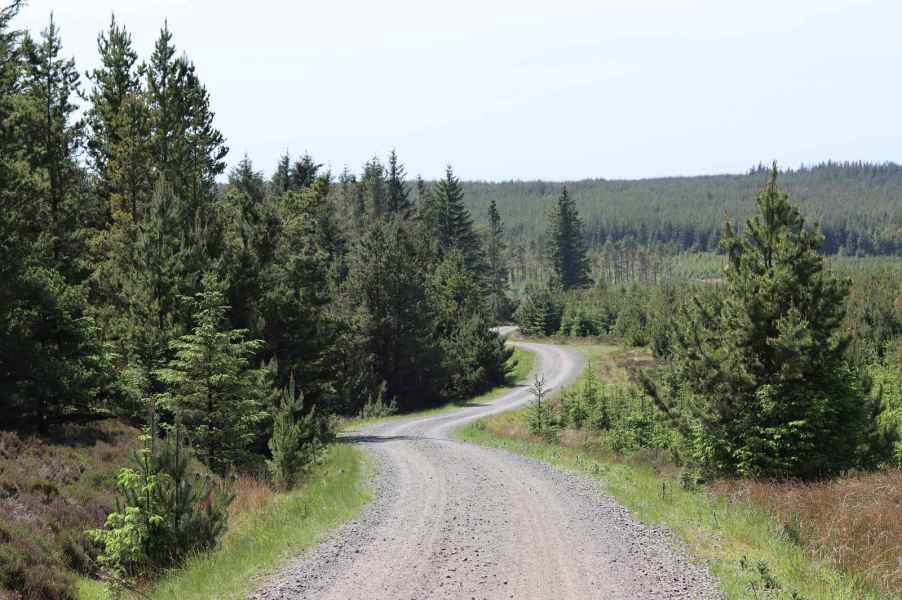
The Most Remote Road Trip You Can Take in North America Is Completely Unpaved and Over 450 Miles From the Closest Town
Stretching over 414 miles through jack pine forests, sprawling tundra, and shimmering lakes, one road trip offers drivers a unique immersion into the heart of the North. The Trans-Taiga Road in Northern Quebec, Canada, is known as the most remote public road you can drive a car in North America.
Situated in the raw Canadian wilderness, a drive up the Trans-Taiga Road isn’t about reaching a destination. In fact, it basically leads to a dead end. This trip is for folks looking to totally envelop themselves in a tundra-esque naturescape.
The journey begins in Matagami, a small town nestled amid the boreal forest of Northern Quebec. From here, the road winds its way north, cutting through the secluded wilderness of the James Bay region.
One of the most remarkable aspects of the Trans-Taiga Road is its seemingly “easy” remoteness. Much of the road is actually an esker, a rocky river bed that once ran inside a glacier during the ice age. The road is mostly wide and flat, with long views of forested landscape peppered with lakes or craggy hills.
Emphasis on “tundra” and “bay” here; you won’t necessarily feel encased by overbearing brush in this part of Canada. “Spacious vista” is the main vibe.

For hundreds of miles, you might encounter little sign of humans
Save for the occasional logging camp or tiny outpost, the road is truly remote. Small populations are mostly private commercial settlements and are not open to the public. After mile 126, there are no formal campsites. At mile 175, there’s a gas station and restaurant. Mile 222 will be your last opportunity to refuel before the end of the road. You should consider carrying fuel with you if you aren’t already.
On the drive, you’ll undergo feelings of solitude, adventure, and exploration. At the end of the road, the closest formal town, Radisson, is over 450 miles away. It takes at least eight hours to complete one way, nonstop. You’ll cross unnamed rivers and bridges in the second half of the drive.
Drive a capable vehicle on the Trans-Taiga Road
Go with a vehicle that can easily tackle dry gravel on clear days. Better yet, go the extra step and bring something with overlanding spirit.
Due to the lack of public services, people, and general environmental conditions, entering the road willy-nilly would be, well, stupid. The road itself is largely unpaved, consisting of esker, gravel, and dirt tracks. The path can be rough and rugged, especially in inclement weather. It’s a journey that requires careful planning and preparation. Drivers should keep in mind that this isn’t a tourist attraction but a road used for commercial purposes that happens to be open to the public.
Walter Muma has shared his wealth of experience in the area. He posted Trans-Taiga driving maps, cautions, and a virtual tour on his site, jamesbayroad.com. Muma writes that you can take a regular passenger car, but beware of road conditions and weather the farther in you travel. He recommends you use a capable 4×4 SUV with good tires if you plan on passing through Brisbay and completing the drive.
After all, if you experience any car trouble, you might end up locking yourself into incredibly expensive service efforts. Muma says that he knew of a time when someone had to have tires flown into the zone at a crippling cost. Preparing for and avoiding emergency situations is essential.
One Reddit user, VanTesseract, posted about their solo trip down the Trans-Taiga Road in a 2007 FJ Cruiser.
“I did go alone. It really added to the feeling [of] remoteness and peacefulness. It wasn’t scary more than it was worrisome in the sense of having a breakdown in the middle of nowhere. I did have some trepidation in that regard but I decided to push through the worry and remind myself I was adventuring and anything that may happen is part of that adventure.”
The Trans-Taiga Road offers a semi-controlled glimpse into a world largely untouched. You’ll spot black bears, caribou, otters, waterfowl, and more.
After hours of remote gravel road, past Brisbay to rougher and narrower as you go, you’ll eventually come to a dead end: a dam at the Caniapiscau Reservoir. Then, you’ll have to go back the way you came.





